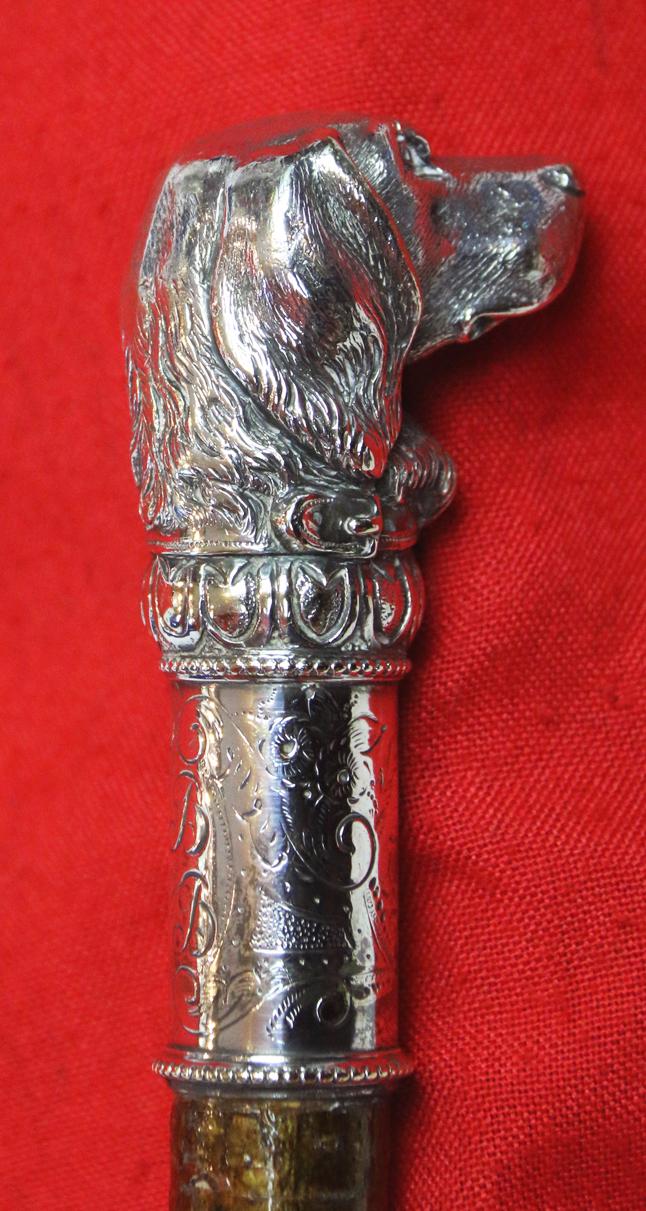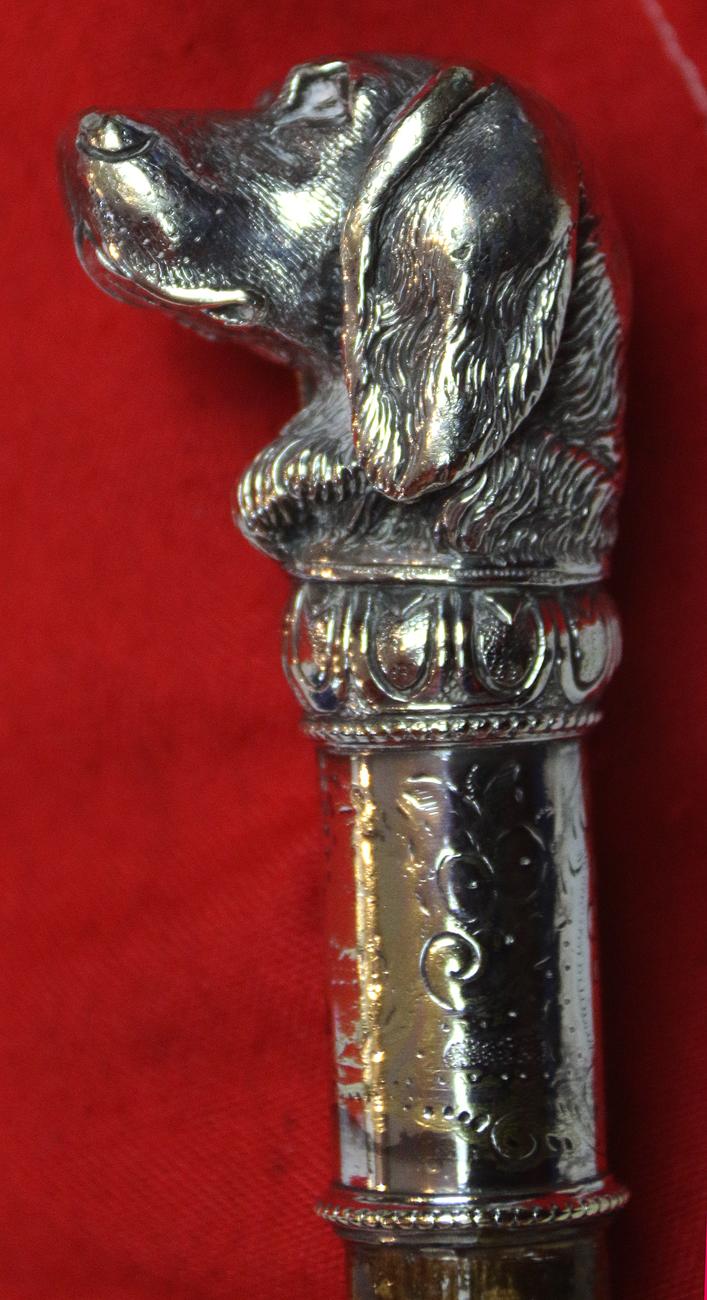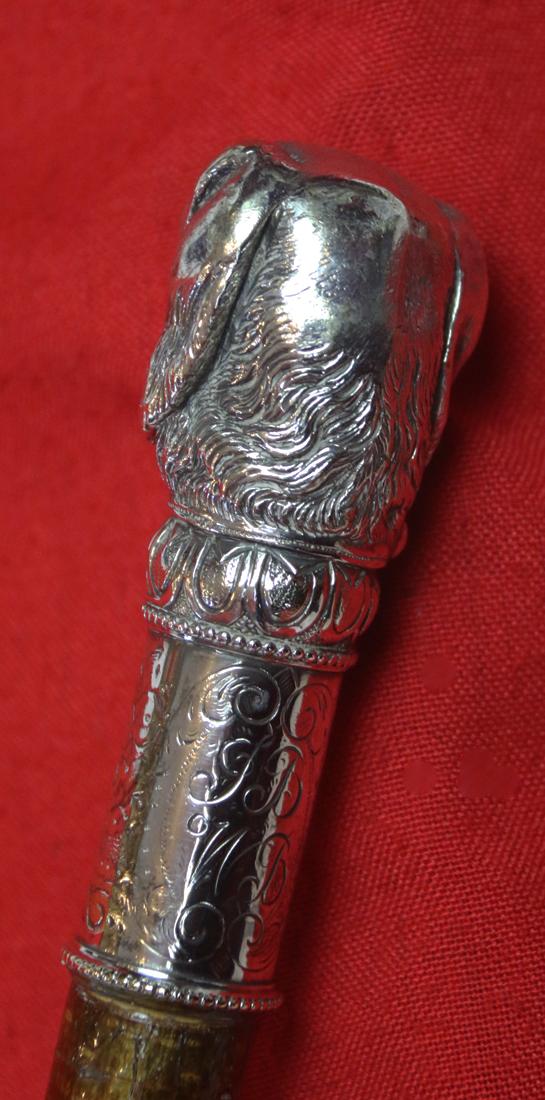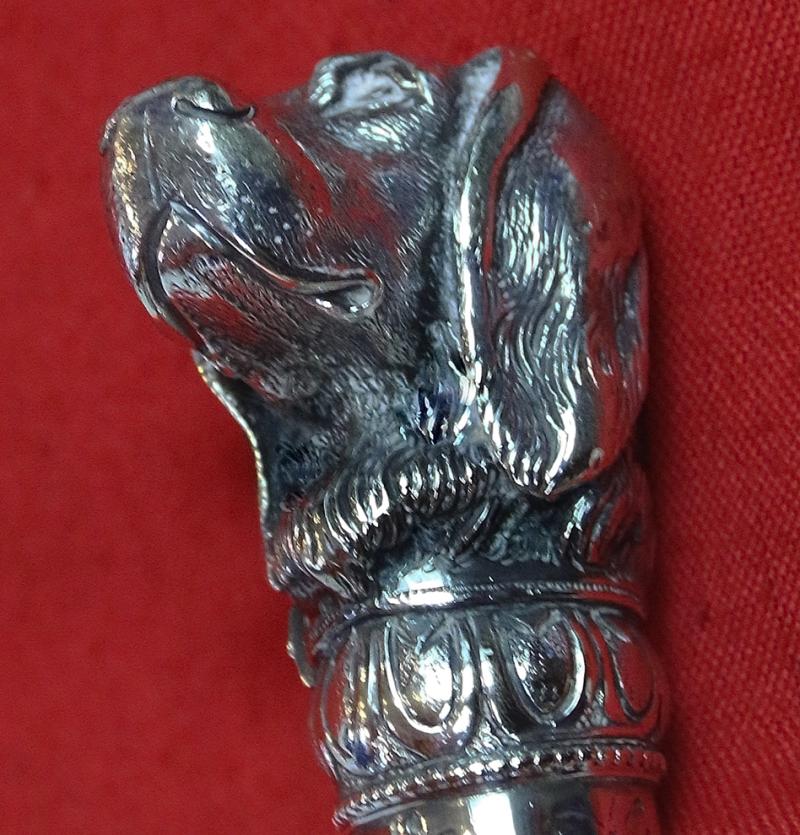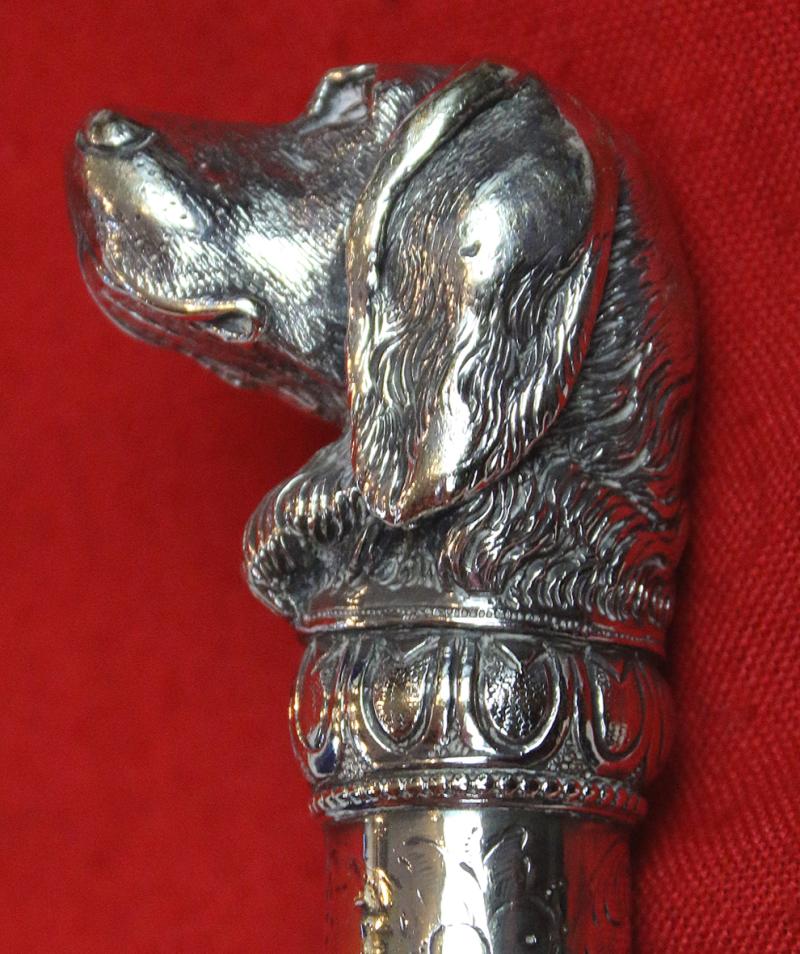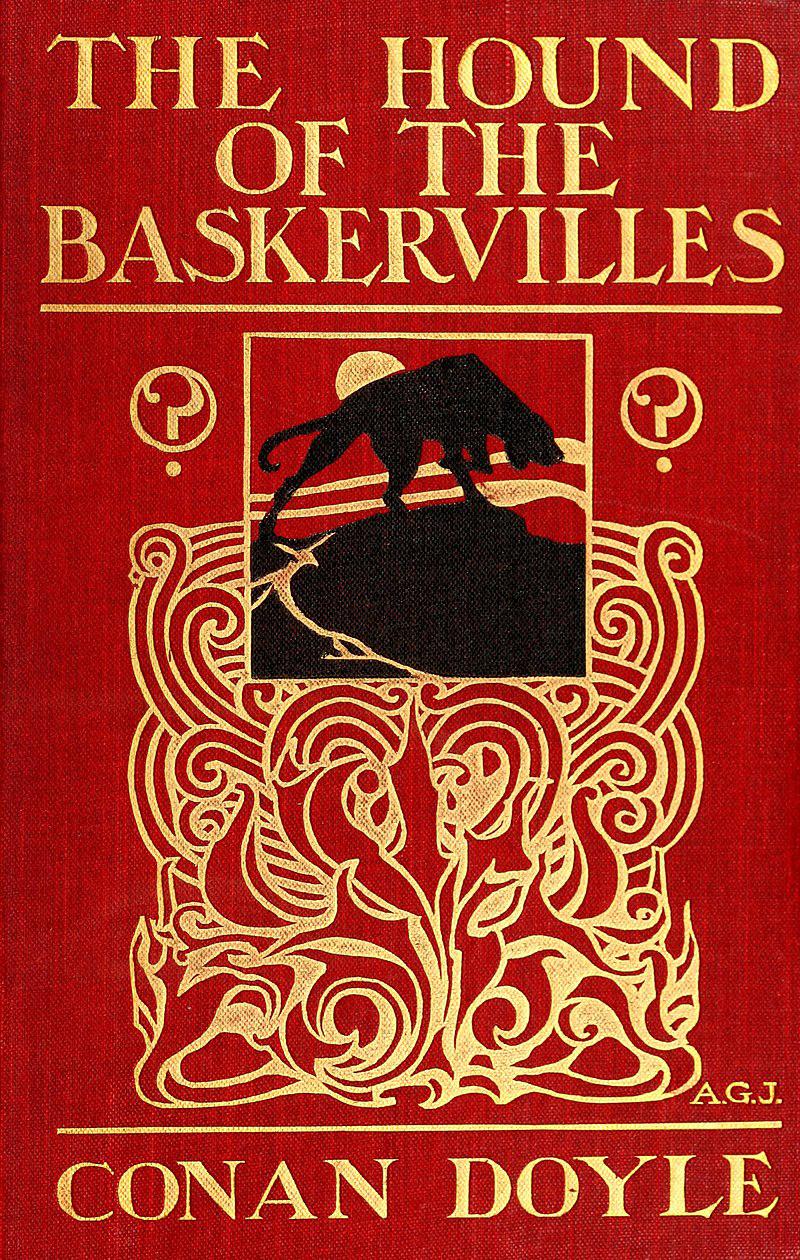Stunning Victorian, Silver Hound's Head Walking Stick Of William Page Wood, 1st Baron Hatherley, PC, British Statesman, Lord High Chancellor of Great Britain, Presented by John Bright, Chancellor of the Duchy of Lancaster & Sherlock Holmes Connection
With lacquered hawthorn wood cane.
Was this 'Hound's Head' appearance on the walking stick, the inspiration for Sir Arthur Conan Doyle's, most famed Sherlock Holmes story, of the fiercesome and diabolical beast, 'The Hound of the Baskervilles' serialized in the Strand Magazine?. According to family legend, the notorious 17th century Squire Richard Cabell inspired the character of Squire Hugo Baskerville, but it was the childhood memory of this very hounds head that was the inspiration of the diabolical beast. The likeness to the illustrations of the hound in Doyle’s original novel is unmistakable.
A most beautiful piece with great political history, of the Victorian Liberal Party, of Prime Minister Lord William Gladstone.
The recipient of the stick, from John Bright, was William Page Wood, 1st Baron Hatherley, PC (29 November 1801 – 10 July 1881). He was a British lawyer and statesman who served as a Liberal Lord High Chancellor of Great Britain between 1868 and 1872 in William Ewart Gladstone's first ministry.
John Bright, the sticks original owner (16 November 1811 – 27 March 1889) was a British Radical and Liberal statesman, one of the greatest orators of his generation and a promoter of free trade policies. In 1849 he was appointed Vice-Chancellor of the County Palatine of Lancaster, and in 1851 was made Solicitor General for England and Wales and knighted. He was the Chancellor of the Duchy of Lancaster, a ministerial office in the Government of the United Kingdom. Excluding the prime minister, the chancellor is the highest ranking minister in the Cabinet Office, immediately after the Prime Minister, and senior to the Minister for the Cabinet Office. It was he who first used the phrase ‘England, mother of Parliaments, and another ‘flogging a dead horse’ ‘
A Quaker, Bright is most famous for battling the Corn Laws. In partnership with Richard Cobden, he founded the Anti-Corn Law League, aimed at abolishing the Corn Laws, which raised food prices and protected landowners' interests by levying taxes on imported wheat. The Corn Laws were repealed in 1846. Bright also worked with Cobden in another free trade initiative, the Cobden–Chevalier Treaty of 1860, promoting closer interdependence between Great Britain and the Second French Empire. This campaign was conducted in collaboration with French economist Michel Chevalier, and succeeded despite Parliament's endemic mistrust of the French.
Bright sat in the House of Commons from 1843 to 1889, promoting free trade, electoral reform and religious freedom. He was almost a lone voice in opposing the Crimean War; he also opposed William Ewart Gladstone's proposed Home Rule for Ireland. He saw himself as a spokesman for the middle class and strongly opposed the privileges of the landed aristocracy. In terms of Ireland, he sought to end the political privileges of Anglicans, disestablished the Church of Ireland, and began land reform that would turn land over to the Catholic peasants. He coined the phrase "The mother of parliaments."
The hounds head top of the walking stick, is engraved on one reverse panel J.B {John Bright}, and W.B {William Bright, was John's son, also a Liberal politician} and on the other side of the hound's head is engraved, W. Wood { the Lord High Chancellor of Great Britain} in a panel on the obverse beneath the hound's head.
The head was, 'supposedly', the inspiration for Sir Arthur Conan Doyle's 'Hound of the Baskervilles'
Doyle was educated at the Jesuit preparatory school Hodder Place, Stonyhurst in Lancashire, which may be the initial connection to John Bright. One might conjecture that Doyle, as a young impressionable boy, saw Bright's hound's head cane {before he gave it to William Wood} maybe, on his {Bright's} visit to Hodder Place School in Lancashire.
This story was imparted to us as part of the family legend of the hound’s head stick's past illustrious history. Of course, there is absolutely no written evidence of this being the case, but it does seem, a most intriguing possibility.
It was also meant to be an accurate likeness of a a beloved hound that belonged to John Bright. John Bright took his hound to Doyle’s prep school when he visited.
Code: 25176
1650.00 GBP


